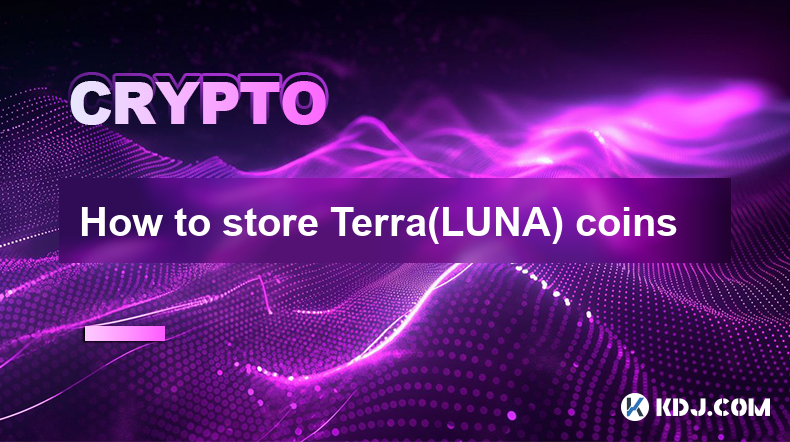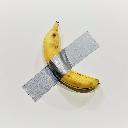-
 Bitcoin
Bitcoin $97,219.4672
1.63% -
 Ethereum
Ethereum $1,820.8950
1.13% -
 Tether USDt
Tether USDt $1.0001
0.02% -
 XRP
XRP $2.1327
-0.43% -
 BNB
BNB $602.3281
0.03% -
 Solana
Solana $147.7911
1.09% -
 USDC
USDC $0.9999
-0.01% -
 Dogecoin
Dogecoin $0.1725
1.12% -
 Cardano
Cardano $0.6706
0.13% -
 TRON
TRON $0.2489
1.41% -
 Sui
Sui $3.3512
1.53% -
 Chainlink
Chainlink $13.8526
1.44% -
 Avalanche
Avalanche $19.6299
-1.30% -
 UNUS SED LEO
UNUS SED LEO $8.7562
0.40% -
 Stellar
Stellar $0.2611
-0.23% -
 Shiba Inu
Shiba Inu $0.0...01279
1.26% -
 Toncoin
Toncoin $3.0266
0.40% -
 Hedera
Hedera $0.1765
0.37% -
 Bitcoin Cash
Bitcoin Cash $369.4993
2.08% -
 Hyperliquid
Hyperliquid $21.1995
1.68% -
 Litecoin
Litecoin $89.5955
4.54% -
 Polkadot
Polkadot $3.9568
0.63% -
 Dai
Dai $1.0002
0.01% -
 Monero
Monero $282.5473
-1.06% -
 Bitget Token
Bitget Token $4.2199
-1.10% -
 Ethena USDe
Ethena USDe $1.0007
0.03% -
 Pi
Pi $0.5835
0.91% -
 Pepe
Pepe $0.0...08266
4.18% -
 Bittensor
Bittensor $367.8815
0.84% -
 Uniswap
Uniswap $4.8814
-0.32%
How to store Terra(LUNA) coins
To securely store your Terra (LUNA) coins, create a hardware wallet, choose a reputable software wallet, transfer LUNA to your wallet, store backup copies of your private keys, and regularly monitor your LUNA coins.
Dec 08, 2024 at 11:28 am

How to Store Terra (LUNA) Coins
Terra (LUNA) is a decentralized blockchain protocol that powers the TerraUSD (UST) stablecoin. LUNA holders can participate in the network's governance and earn rewards through staking. To securely store your LUNA coins, follow these steps:
1. Create a Hardware Wallet
Hardware wallets, such as Ledger Nano X or Trezor Model T, provide the most secure method of cryptocurrency storage. They generate and store your private keys offline, making them immune to online hacking attempts.
- Purchase a Hardware Wallet: Choose a reputable wallet manufacturer that supports Terra (LUNA).
- Set Up the Wallet: Follow the manufacturer's instructions to set up your wallet and generate a seed phrase.
- Store the Seed Phrase Safely: Write down your seed phrase and store it securely offline. This phrase is essential for recovering your wallet in case of damage or theft.
2. Choose a Software Wallet
Software wallets, such as Terra Station or Exodus, are convenient for storing LUNA if you plan on actively accessing them. They can be accessed from a variety of devices, including computers and smartphones. Keep in mind that while desktop wallets offer enhanced privacy, mobile wallets are more suitable for everyday transactions.
- Install the Wallet: Download the wallet application from a reputable source.
- Create an Account: Register for a new account or import an existing one if you have a previous backup.
- Secure Your Wallet: Set a strong password and enable two-factor authentication (2FA) for added protection.
3. Transfer LUNA to Your Wallet
Once you have chosen a storage method, you need to transfer your LUNA coins to your wallet.
- Hardware Wallet: Connect your hardware wallet to your computer and follow the on-screen instructions to transfer your LUNA coins from an exchange or another wallet.
- Software Wallet: Copy your wallet's receiving address and paste it into the sender's address field on the platform where you are transferring your LUNA coins from.
4. Store Multiple Copies of Your Private Keys
Your private keys grant access to your cryptocurrency funds. Ensure that you back up and store multiple copies of your private keys in different locations to prevent losing access to your funds in case of hardware failure or wallet loss.
- Seed Phrase: The seed phrase used to set up your hardware wallet should be stored securely offline in multiple locations.
- Paper Wallet: Generate a paper wallet with your private key encoded as a QR code. Store these paper wallets in multiple secure locations.
5. Monitor Your LUNA Coins
Regularly monitoring the balance and transaction history of your LUNA coins is essential for security purposes. This allows you to detect any unauthorized activity or identify potential security breaches.
- Transaction History: Review your wallet's transaction history periodically to check for any suspicious transactions.
- Account Balance: Monitor your account balance to ensure that you have the correct amount of LUNA coins.
Disclaimer:info@kdj.com
The information provided is not trading advice. kdj.com does not assume any responsibility for any investments made based on the information provided in this article. Cryptocurrencies are highly volatile and it is highly recommended that you invest with caution after thorough research!
If you believe that the content used on this website infringes your copyright, please contact us immediately (info@kdj.com) and we will delete it promptly.
- Tron (TRX) is catching the market's attention with its current price of $0.244, holding steady above its key support level of $0.24
- 2025-05-08 06:45:13
- Bitcoin Could Be Getting Closer to Having a Place at the Government Table
- 2025-05-08 06:45:13
- Don't Miss BTFD at $0.0002—Next Crypto To Explode with 8900% ROI as PENGU Goes Walmart and SNEK Gets Global!
- 2025-05-08 06:40:13
- US Large-Cap Sustainable Funds Have Lost 5.93% of Their Value Year-to-Date
- 2025-05-08 06:40:13
- Shiba Inu (SHIB) Burn Rate Drops by 87%, Only 320814 Tokens Destroyed Today
- 2025-05-08 06:35:14
- Quant (QNT) Price Surged Past $88 as Investors Bought the Dip
- 2025-05-08 06:35:14
Related knowledge

Is Ethereum Layer2 fee low? How to use it cheaper?
May 08,2025 at 03:56am
The question of whether Ethereum Layer 2 solutions offer lower fees and how to use them more economically is a topic of great interest within the cryptocurrency community. Ethereum's Layer 2 solutions have been developed to address the high transaction fees and scalability issues associated with the main Ethereum network. In this article, we will delve ...

How to calculate Ethereum network fee? How to reduce transaction costs?
May 08,2025 at 02:15am
Understanding and managing Ethereum network fees is crucial for anyone involved in transactions on the Ethereum blockchain. The network fee, also known as gas fee, is the amount of Ether (ETH) required to successfully conduct a transaction or execute a smart contract on the Ethereum network. Calculating these fees and finding ways to reduce them can sig...

What is Ethereum Gas Fee? How to optimize Gas Fee to save costs?
May 08,2025 at 03:43am
Ethereum gas fees are a crucial aspect of interacting with the Ethereum blockchain. Understanding and optimizing these fees can significantly impact the cost-effectiveness of transactions and smart contract interactions. In this article, we will delve into what Ethereum gas fees are, how they are calculated, and provide detailed strategies for optimizin...

How to perform MOVE cross-chain transfer? What to do if the gas fee is too high?
May 07,2025 at 08:03pm
Introduction to MOVE Cross-Chain TransferCross-chain transfers have become an essential part of the cryptocurrency ecosystem, allowing users to move assets between different blockchain networks. One of the popular protocols for achieving this is the MOVE cross-chain transfer. This article will guide you through the process of performing a MOVE cross-cha...

How is the DYDX liquidation price calculated? How is the forced liquidation mechanism?
May 08,2025 at 06:49am
The DYDX liquidation price and the forced liquidation mechanism are crucial aspects of trading on the dYdX platform, a decentralized exchange that allows users to trade perpetual contracts. Understanding these concepts is essential for managing risk and maximizing potential returns. In this article, we will delve into the details of how the DYDX liquida...

Does DYDX support cross-chain? Is the transfer speed fast?
May 07,2025 at 05:56pm
Introduction to DYDXDYDX is a leading decentralized exchange (DEX) that primarily operates on the Ethereum blockchain. It is known for its advanced trading features, including perpetual contracts and margin trading. A common question among users is whether DYDX supports cross-chain functionality and how fast the transfer speeds are. In this article, we ...

Is Ethereum Layer2 fee low? How to use it cheaper?
May 08,2025 at 03:56am
The question of whether Ethereum Layer 2 solutions offer lower fees and how to use them more economically is a topic of great interest within the cryptocurrency community. Ethereum's Layer 2 solutions have been developed to address the high transaction fees and scalability issues associated with the main Ethereum network. In this article, we will delve ...

How to calculate Ethereum network fee? How to reduce transaction costs?
May 08,2025 at 02:15am
Understanding and managing Ethereum network fees is crucial for anyone involved in transactions on the Ethereum blockchain. The network fee, also known as gas fee, is the amount of Ether (ETH) required to successfully conduct a transaction or execute a smart contract on the Ethereum network. Calculating these fees and finding ways to reduce them can sig...

What is Ethereum Gas Fee? How to optimize Gas Fee to save costs?
May 08,2025 at 03:43am
Ethereum gas fees are a crucial aspect of interacting with the Ethereum blockchain. Understanding and optimizing these fees can significantly impact the cost-effectiveness of transactions and smart contract interactions. In this article, we will delve into what Ethereum gas fees are, how they are calculated, and provide detailed strategies for optimizin...

How to perform MOVE cross-chain transfer? What to do if the gas fee is too high?
May 07,2025 at 08:03pm
Introduction to MOVE Cross-Chain TransferCross-chain transfers have become an essential part of the cryptocurrency ecosystem, allowing users to move assets between different blockchain networks. One of the popular protocols for achieving this is the MOVE cross-chain transfer. This article will guide you through the process of performing a MOVE cross-cha...

How is the DYDX liquidation price calculated? How is the forced liquidation mechanism?
May 08,2025 at 06:49am
The DYDX liquidation price and the forced liquidation mechanism are crucial aspects of trading on the dYdX platform, a decentralized exchange that allows users to trade perpetual contracts. Understanding these concepts is essential for managing risk and maximizing potential returns. In this article, we will delve into the details of how the DYDX liquida...

Does DYDX support cross-chain? Is the transfer speed fast?
May 07,2025 at 05:56pm
Introduction to DYDXDYDX is a leading decentralized exchange (DEX) that primarily operates on the Ethereum blockchain. It is known for its advanced trading features, including perpetual contracts and margin trading. A common question among users is whether DYDX supports cross-chain functionality and how fast the transfer speeds are. In this article, we ...
See all articles





















































































